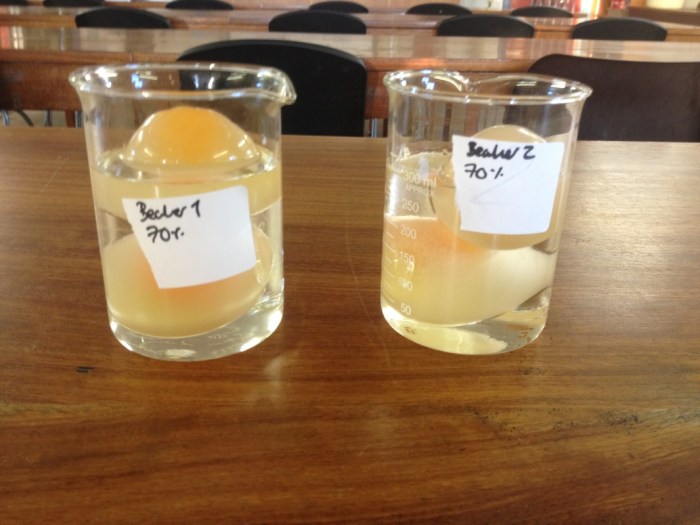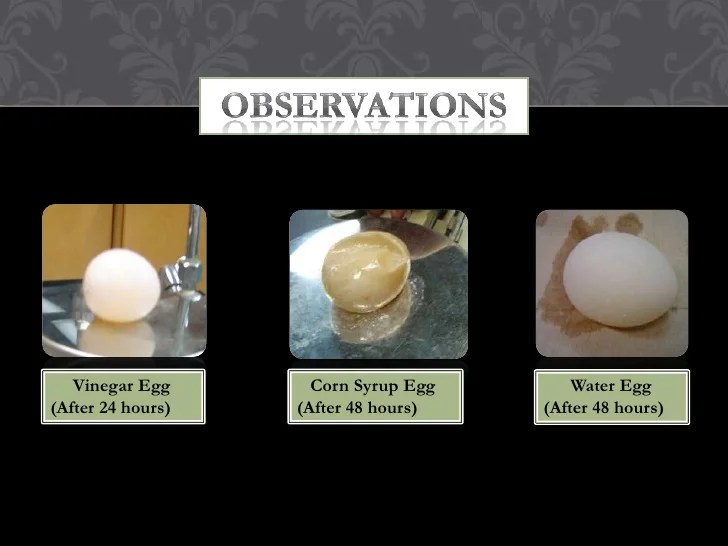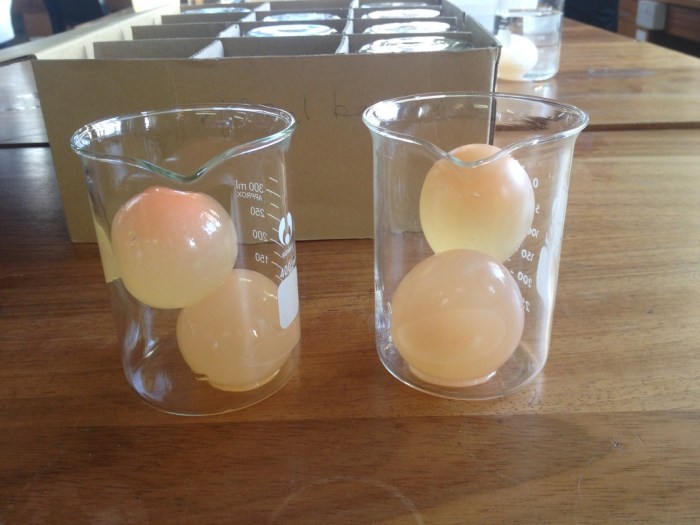Embarking on a scientific odyssey, the Egg Osmosis Experiment Lab Report unveils the fascinating realm of osmosis, a fundamental process governing cellular life. Through meticulous experimentation and analysis, this report sheds light on the intricate interplay between water and solute movement across semipermeable membranes, providing valuable insights into the dynamic nature of biological systems.
This report presents a comprehensive overview of the experiment, delving into the experimental design, data analysis, and implications of the findings. It serves as an invaluable resource for students, educators, and researchers seeking to deepen their understanding of osmosis and its biological significance.
Introduction

The egg osmosis experiment is a classic science experiment that demonstrates the process of osmosis. Osmosis is the movement of water across a semipermeable membrane from an area of high water concentration to an area of low water concentration. In the egg osmosis experiment, an egg is placed in a solution of water and salt.
The water in the solution has a higher concentration of water than the water inside the egg, so water moves from the solution into the egg. This causes the egg to swell and eventually burst.
Materials and Methods, Egg osmosis experiment lab report
The following materials are required for the egg osmosis experiment:
- 1 egg
- 1 glass of water
- 1 tablespoon of salt
- 1 clear glass or jar
To conduct the experiment, follow these steps:
- Place the egg in the glass or jar.
- Add the water to the glass or jar.
- Add the salt to the water and stir until it dissolves.
- Observe the egg for 24 hours.
Results
The egg will swell and eventually burst. The rate at which the egg swells will depend on the concentration of the salt solution. The higher the concentration of the salt solution, the faster the egg will swell.
Discussion
The results of the egg osmosis experiment demonstrate the process of osmosis. Osmosis is the movement of water across a semipermeable membrane from an area of high water concentration to an area of low water concentration. In the egg osmosis experiment, the water in the solution has a higher concentration of water than the water inside the egg, so water moves from the solution into the egg.
This causes the egg to swell and eventually burst.
The egg osmosis experiment is a simple but effective way to demonstrate the process of osmosis. This experiment can be used to teach students about the importance of osmosis in biological systems.
References
- Campbell, N. A., & Reece, J. B. (2002). Biology (6th ed.). San Francisco: Benjamin Cummings.
- Raven, P. H., Johnson, G. B., Mason, K. A., Losos, J. B., & Singer, S. R. (2011). Biology (9th ed.). New York: McGraw-Hill.
Expert Answers: Egg Osmosis Experiment Lab Report
What is the purpose of the egg osmosis experiment?
The egg osmosis experiment aims to demonstrate the process of osmosis and its impact on the movement of water and solutes across a semipermeable membrane.
What are the key findings of the egg osmosis experiment?
The experiment reveals that water moves from an area of low solute concentration (hypotonic solution) to an area of high solute concentration (hypertonic solution) across the semipermeable membrane of the egg.
What are the limitations of the egg osmosis experiment?
The experiment is limited by the use of an egg as a model system, which may not fully represent the complexity of biological membranes in living organisms.


